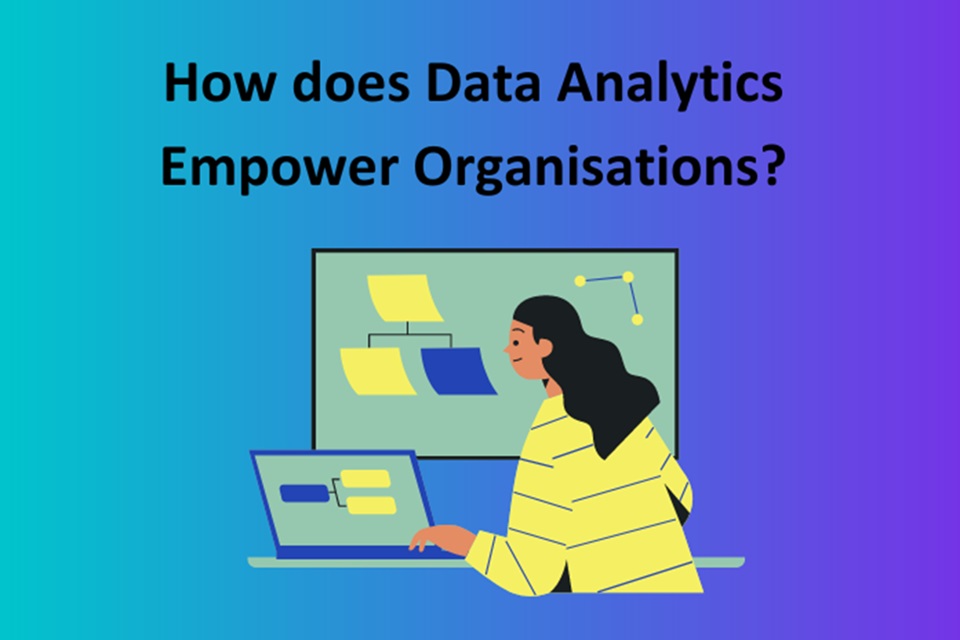In every organisation, the Importance of Data Analytics is greater as businesses widely use it to gain valuable insights and make intelligent decisions. Professionals join Data Analytics Training Online or offline and get their certifications for an advanced career. In this blog, we will discuss how businesses benefit from using data analytics.
Table of Contents
Benefits Of Data Analytics In Organisations
Enhanced Decision-Making
Data analytics gives organisations power by giving them ideas based on data that help them make better decisions. Important parts are:
Informed Decisions
Instead of going with your gut or intuition, use data analytics to make choices based on facts. This helps people make better, more correct, and more strategic decisions.
Real Time Insights
You can use real time analytics dashboards and reports. It helps to monitor key performance indicators (KPIs) and track progress. You can make changes to operations and plans as needed.
Predictive Analytics
Use predictive analytics models to guess what will happen with trends, customer behaviour, the market, and possible risks. This makes it possible to make proactive decisions and develop ways to lower risks.
Improved Operational Efficiency
Data analytics improves organisational efficiency by making processes, resource allocation, and performance run more smoothly. Some ways to make things better are:
Performance Monitoring
Set up performance tracking systems that are driven by analytics to monitor operational metrics, spot deviations, and take corrective action.
Process Optimisation
Look at routines, find areas where things are getting in the way, and streamline processes to make them more efficient and productive.
Resource Allocation
Data analytics can help you better distribute resources based on demand and goals, such as budget and employees.
Strategic Planning & Forecasting
Strategic planning and business intelligence depend on data analytics. Some important perks are:
Market Insights
Data analytics can help you examine market trends, competition, and industry standards. It can also help you learn about possibilities and new trends in the market to make strategic plans and decisions.
Financial Forecasting
Predictive analytics models can help predict budget allocations, risk assessments, financial performance, and income projections. This makes it easier to plan finances and manage resources.
Risk Management
Using data-driven risk management methods, you can identify risks and lower their impact. Look at past data, trends, and predictive models to discover possible risks, compliance problems, and market disruptions.
Innovation & Product Development
Using customer insights and market trends, data analytics drives innovation and the creation of new products. Some strategies are:
Product Lifecycle Management
Consider the lifecycle of the product to improve the process of making it and setting prices. The decision on product delivery also depends on this. Check always how well your products are doing and what customers are saying. You also analyse how your competitors are doing.
Innovation Ideas
Using data analytics, you can find out what your customers want, need, and are having trouble with. You can also get comments, do sentiment analysis, and look for ways to improve the product and generate new ideas.
Agile Decision-Making
Adopt data-driven decision-making frameworks and agile methods to speed up the innovation cycle, test ideas more often, and get goods on the market more quickly.
Enhanced Risk Management & Compliance
Data analytics helps with risk management and safety by effectively finding, evaluating, and reducing risks. Among these are:
Fraud Detection
Use advanced analytics methods, such as anomaly detection, machine learning, and pattern recognition, to find and stop fake activities, transactions, and behaviours.
Compliance Monitoring
Set up analytics-based compliance monitoring tools to ensure that rules, regulations, and best practices are followed. Find holes in compliance, risks, and areas for improvement.
Cybersecurity Analytics
Use data analytics to detect hacking threats, handle incidents, and check for vulnerabilities. Monitor network activity, look for strange things, and protect yourself from cyber threats before they occur.
Continuous Improvement & Culture
Data analytics helps organisations become more data-driven by encouraging people to learn how to use data, work together, and always be better. Important parts are:
Data Literacy Programs
Spend money on data literacy education and training programmes to give your employees the skills to understand, analyse, and use data successfully.
Constant Feedback & Iteration
Set up measurement frameworks, data-driven success metrics, and feedback loops to track progress, judge results, and improve strategies.
Cross Functional Collaboration
Get stakeholders, teams, and departments to share data, ideas, and the best ways to do things. Break down data walls and encourage people from different departments to make decisions based on shared goals and data.
Conclusion
Data analytics is considered an essential tool for helping businesses make decisions. It gives organisations various advantages.



